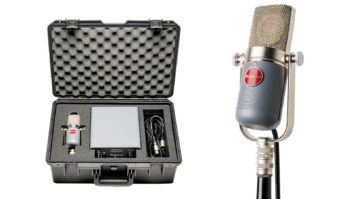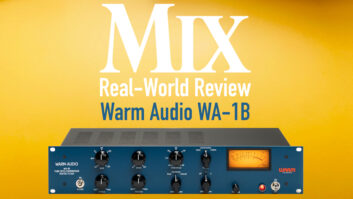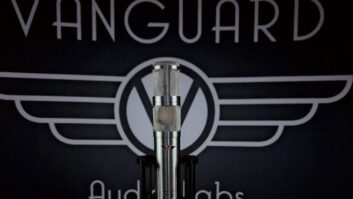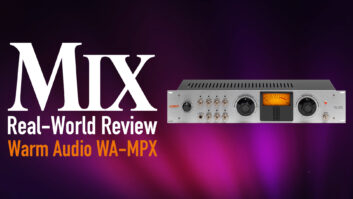Warm Audio has been making quite a name for itself in creating “tributes” to classic audio products, manufacturing them using modern production techniques and selling them at affordable prices. One of the company’s more recent offerings is the WA-47, which, as its name implies, is based on the classic Neumann U47 tube microphone. Given the current prices for U47s on the secondhand market, the WA-47 is relatively affordable. But can it match the original?
Like its inspiration, the WA-47 is a large-diaphragm tube mic with a transformer-balanced output and multiple pickup patterns. The transformer is manufactured in the USA by TAB-Funkenwerk, a company that knows a thing or two about transformers and the U47. Unlike the original, the WA-47’s pattern is switched at the power supply, with nine variations ranging from the big three (figure-eight, cardioid and omni) through intermediate positions such as wide-cardioid and super-cardioid. An external power supply, cable, shockmount (with extra bands) and wood box for the microphone are shipped in a cardboard box with a foam insert. (For the long haul you’d probably want to transplant the contents to a briefcase.)
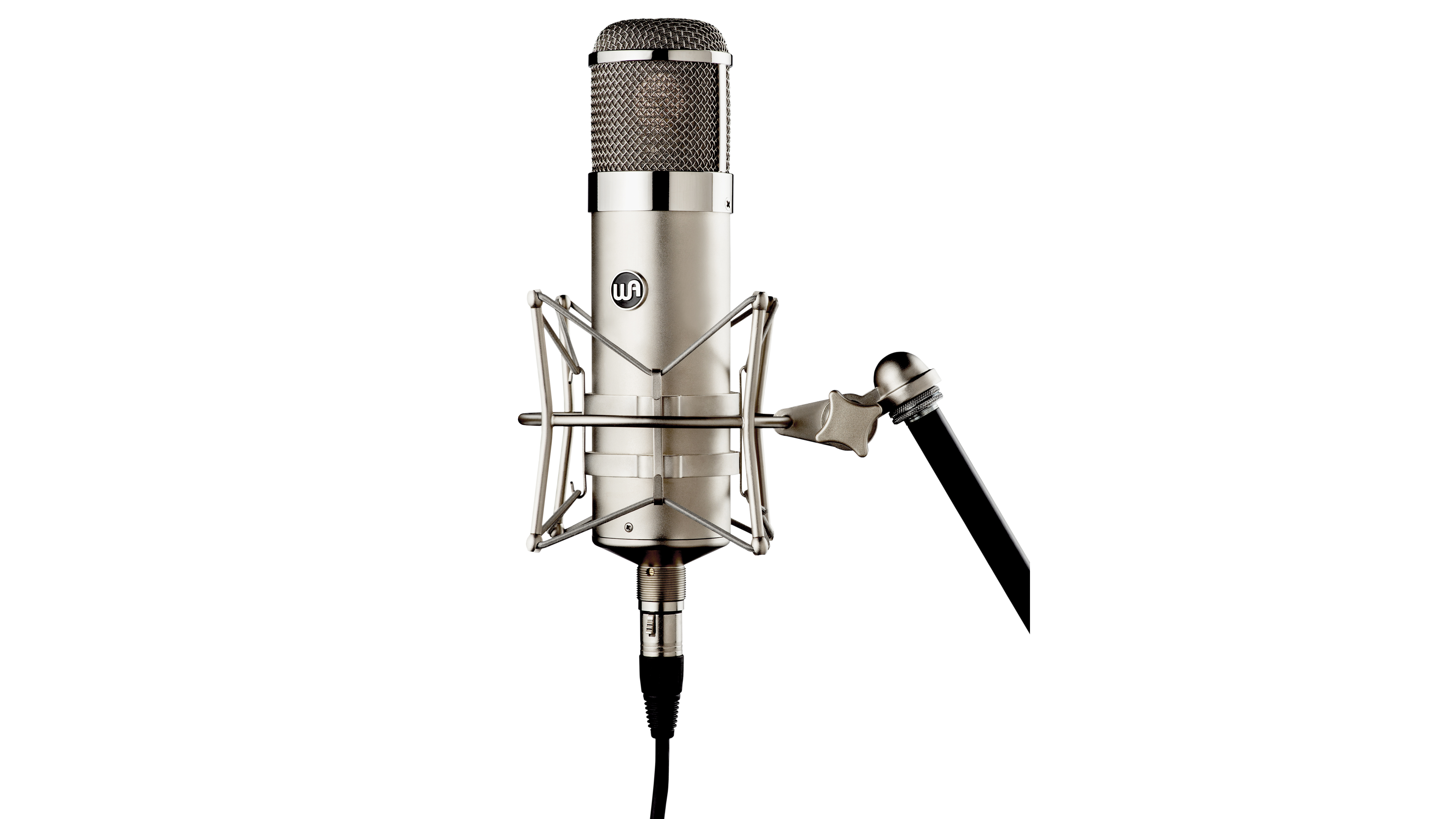
Visually, the WA-47 is a clone of the U47, and build quality is high given the price. According to Warm, the WA-47 (and the WA-47jr) employs a custom reproduction of the K47 capsule, one of two capsules types used in the original. Removing the body tube reveals a neatly constructed circuit board mostly populated with Rubycon and WIMA capacitors, and 1 percent resistors (there were also a few caps that appeared to be non-premium parts).
The tube is a JJ 5751, a variation of a 12AX7 with a lower gain factor—though as we’ll see, the 5751 certainly did not yield a low audio output. The tube is held in place with a metal clamping device, which functions as a heat sink and also damps microphonics. The cable for connecting the mic to the PS is Gotham GAC7, but I was unfamiliar with the manufacturer of the XLR connectors. The overall presentation is a very nice package, and I felt it was a notch above many of the offshore-made mics in a similar price range.
No doubt the WA-47 has the look of a vintage U47. It has some heft to it, so I’d suggest using a mic stand that’s up to the task. Looking into the power supply, it seems a step above those that all too often accompany tube mics selling under $1,000. The WA-47 has no pad or HPF, but I didn’t find that to be a limitation.
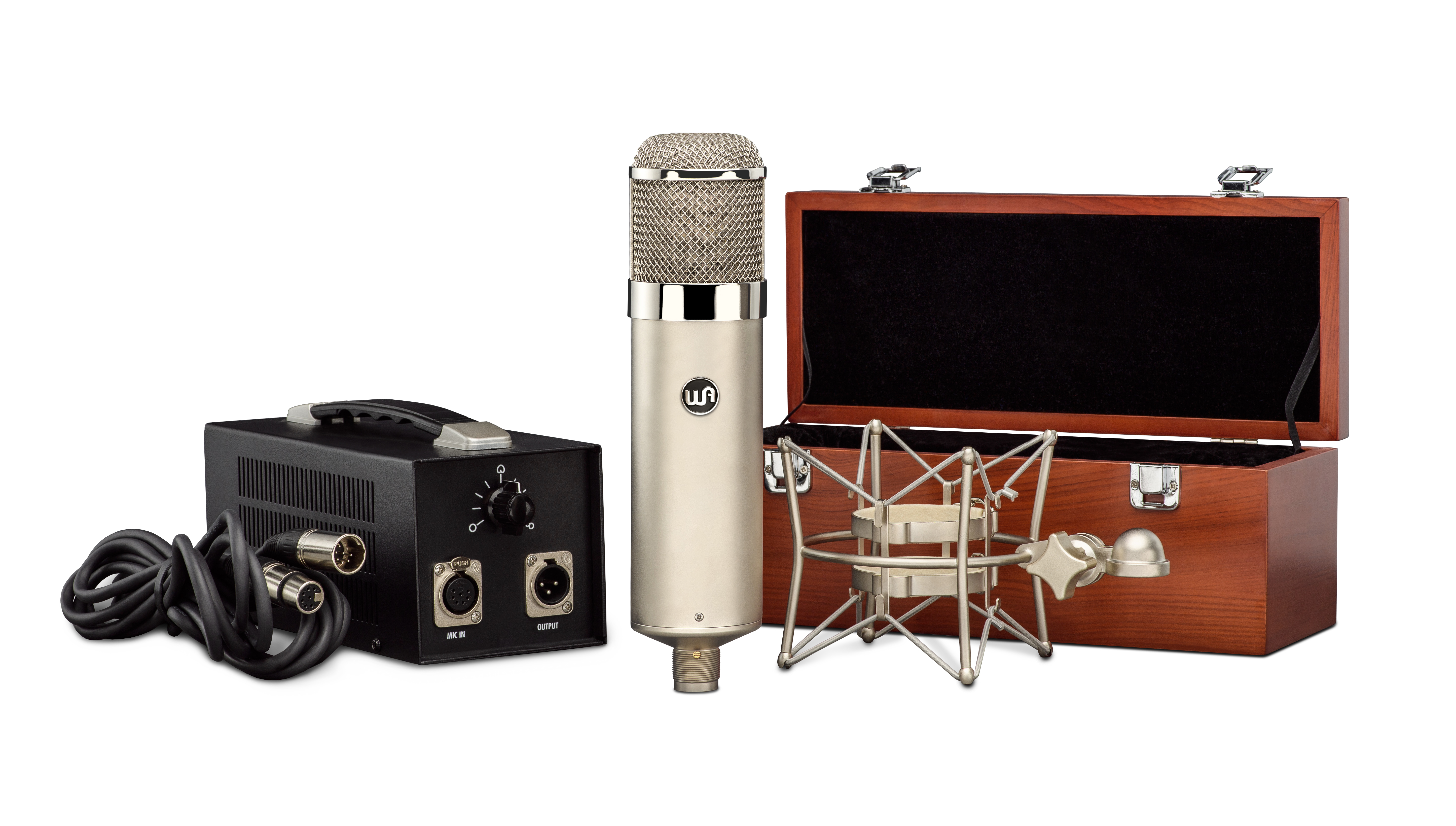
I’ll get my one gripe out of the way: Like the shockmount for the original 47, the WA-47’s mount has two metal bands that clamp around the mic body. These are lined with rubber that’s actually quite slick, the result being that the mic can slip out of the shockmount. I almost had a heart attack when this happened 6 feet above a hardwood floor. I then made a point when mounting the mic to ensure that the Warm logo was in between the metal bands. This ensured—whether the mic was right-side-up or upside-down—that the logo would stop the mic from slipping out of the mount.
My first sessions with the WA-47 employed the mic as an overhead for drums.
Related: Review: Warm Audio WA-2A Tube Opto Compressor, by Barry Rudolph, Oct. 27, 2016
I set the pattern to 11 o’clock, which translates to one click off cardioid toward omni. The mic was placed about five feet high, above the rack tom and pointing toward the snare and patched into a Vintech X73. The overall sound was smooth and well-balanced. The toms were full and round, snare had plenty of crack, and there was a really nice overall sense of depth (the cymbals and rack tom appeared to be closer—not just louder—than the ride cymbal, high hat and floor tom). I could be happy with the WA47 and a kick drum mic for a retro session.
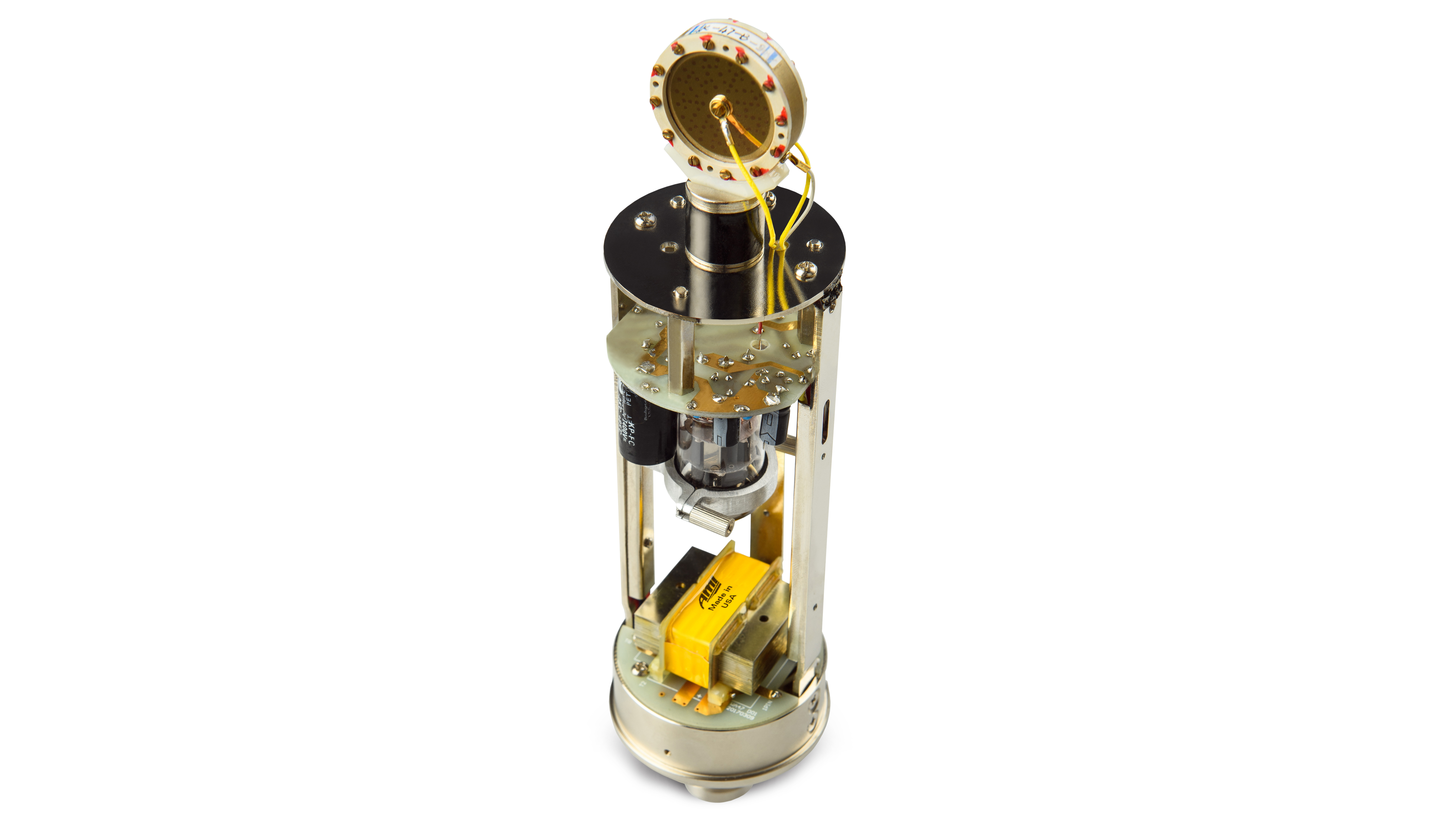
I then tried the WA-47 on acoustic guitar and vocal using a variety of patterns. Changing patterns on the power supply did not produce any audible noises, and different patterns delivered subtle variations in tone. Straight cardioid produced the biggest tone with very smooth upper-mids. Patterns in between cardioid and figure-8 were the least smooth in the upper-mids and I didn’t care for them on vocals.
The figure-8 pattern was very consistent from front to back, perhaps a hair brighter at the rear. As expected, proximity effect varies with the pickup pattern and remains subtle through the 11 o’clock position. At the straight cardioid position, proximity effect was noticeable and useful for male vocal, but not obnoxious. The 2 and 3 o’clock positions yield the most pronounced proximity effect, which was too much for my taste. I liked the sound of the mic when it was placed very close to a male singer, one click off omni (9 o’clock), which produced a very intimate sound without buildup in the lower mids.
Related: Review: Warm Audio TB12 ToneBeast Is a Versatile, Great-Sounding High-Gain Preamp, by Tim Dolbear, Jan. 1, 2014
Next it was time to put the WA-47 to an acid test. With the help of Roy Hendrickson at Power Station (New York), I compared the WA-47 to two vintage U47s, as well as a 47 that Roy built by hand using original parts and following the original schematics. The first thing we noticed was that the output of the WA-47 was way hotter than any of the originals. All of the mics were routed through Neve 31102 preamps. Using the same gain setting on all preamps, the WA-47 recordings were 12 to 15 dB louder, and background noise was inaudible.
Surprisingly, the WA-47 held its own against these giants that fetch more than ten times its price. On acoustic guitar the WA-47 and U47 are definitely in the same sonic family, though the WA-47 doesn’t quite have that extended, silky, magical top end evident in the U47. Used on a male vocal, the WA-47 has a bit more low-mid, making it somewhat thicker, while the U47 captured slightly more “air” or sense of the room. The Roy 47 had a more open top end and a slightly less-colored lower mid, or you could say there was a hair more lower mid on the WA-47. One could argue that it’s no different than one vintage U47 might sound from another.
According to the company’s website, the designers used two vintage U47s as a benchmark for designing the WA-47. Of course the “sound” of a vintage 47 is a moving target due to age of the original mics and the wildly varying conditions under which they have aged—not to mention whether the original employed an M7 or a K47 capsule.
As a result, there are two ways to judge the WA-47: on its own, separate from any vintage reference, or as a clone of an iconic microphone. Judging the WA-47 as a clone, it certainly has a sonic signature similar to that of a vintage 47 and captures the essence of that sound. If you’re looking for that vibe, the WA-47 has it.
Judging the WA-47 against modern competitors, it shines even brighter. It’s a bit more expensive than the plethora of offshore-made tube microphones priced similarly but featuring poor build quality and crummy power supplies. That extra money yields a markedly better product that doesn’t feel like it will fall apart. The WA-47 comes in a nice package (I won’t gripe about the cardboard box) and really is an excellent all-around microphone at a very reasonable price. And it definitely has the vintage vibe. If you have the chance you should hear it.
Another Option from Warm Audio: WA-47jr
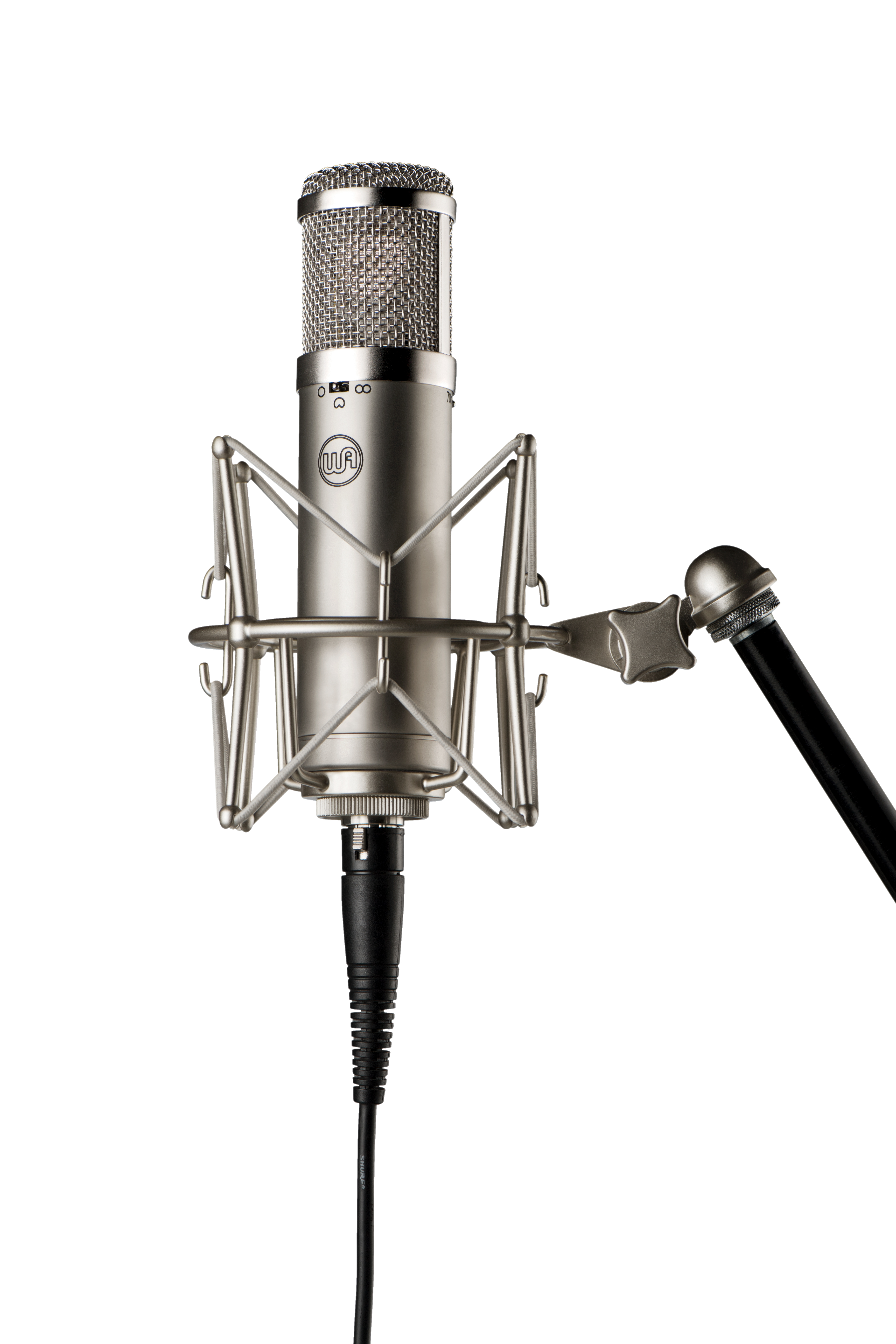
The “other” popular 47 is the U47 FET, and Warm has also introduced a clone of this microphone, the WA-47jr ($299). Unlike the U47 FET, the 47jr may be switched between cardioid, omni and figure-8 patterns. Additional switches are provided for a 10 dB pad and 70 Hz HPF. The 47jr employs the same capsule as the WA-47 Tube in a transformerless topology; its circuit board is potted so you can’t see the component layout, but it appears to utilize surface-mount semiconductors.
I didn’t have the chance to A/B the 47jr against am original U47 FET, but placing it on a kick drum certainly delivers the familiar sound of the original in that application—instantly recognizable as a kick sound you’ve heard a thousand times. When used to record a Taylor acoustic guitar, the 47jr sounded much different than the WA-47 Tube, producing a “small” sound that actually helped it fit into a busy mix.
On lead vocal, the 47jr did not fare well. I found it to be “closed” with a cloudy top end (cardioid). Set to figure-8, the top end seemed to open up a bit but it’s tough to say if that could have been due to reflections from the wall facing the vocalist. The 47jr produces a lot of proximity effect at close distances, but I found it to be a in a somewhat higher register, almost reaching into the low-mids and not making the voice artificially bloated as other mics can. Unless you really want the 47jr for kick drum, I’d save my money and get the big brother.
Product Summary
Company: Warm Audio
Product: WA-47 Tube Condenser Microphone
Website: www.warmaudio.com/wa47
Price: $899 MSRP
Pros: Excellent sound; good build quality; multipatterns make it highly versatile; high value for the price
Cons: Shockmount slips; no pad or HPF


